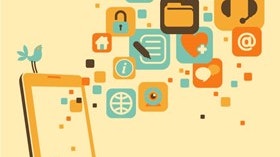Homepage
•
Learning Library
•
Blog
•
3 things every teacher should be doing with web 2.0 tools
Expand breadcrumbs
Expand breadcrumbs
- Learning Library
- Blog
- 3 things every teacher should be doing with web 2.0 tools
- Homepage
- •
- Learning Library
- •
- Blog
- •
- 3 things every teacher should be doing with web 2.0 tools
3 things every teacher should be doing with web 2.0 tools
By Nicole Krueger
April 5, 2014








